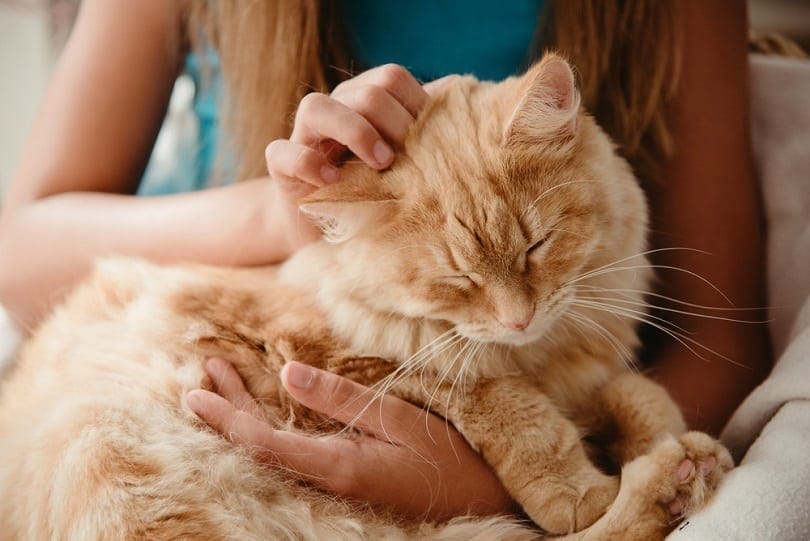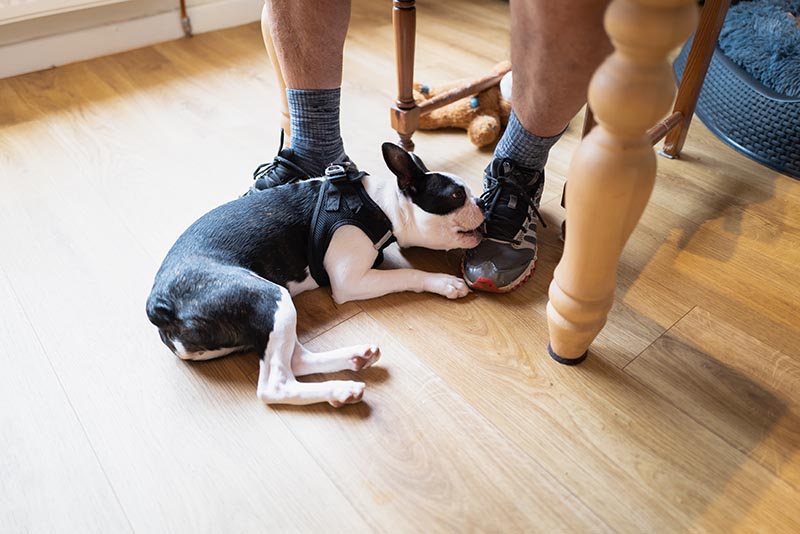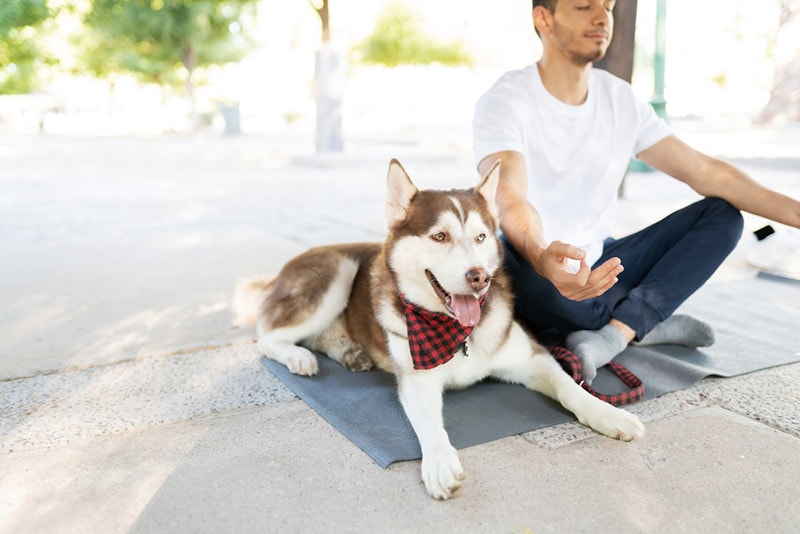The benefits of meditating are well-documented in the scientific literature. Research has shown it can relieve pain.1 It may also reduce your risk of cardiovascular disease.2 Regular meditation may even increase your brain’s gray matter.3 You may not have considered including your dog or cat in your practice. However, there are many reasons to try.
The time together can strengthen the bond you have with your pet. It can have a calming effect on your pup from the quiet time you spend together. It’ll reduce stress for both of you. Psychologists have found that meditating with your dog improves therapy and engagement with their patients.4 It was especially helpful when treating mental health issues caused by the pandemic.
We must start by saying that meditation doesn’t always work with all animals. Puppies and kittens are unlikely to sit still, making it a better activity to do with adult pets. You must all be patient. The setting and atmosphere are probably a lot different than your dog or cat is used to being with you. However, they are intelligent and will soon learn the routine, particularly if you’re consistent with your practice.
Research has shown that cats5 and dogs6 can read human emotions. They will pick up on your calm state. It will likely help you relax, making it easy for them to act accordingly. You know your pet best. It’s essential to pick a time when it’s not usually racing around the house or backyard. Refrain from meditating with your pet before feeding time when its attention is elsewhere.

The 12 Tips on How to Meditate With Pets
1. Find a Quiet Place to Meditate
Minimizing distractions is vital for your solo practice and your sessions with your pet. Pick a room where it’s quiet and away from the hustle and bustle of your household. If possible, close the door to ensure it stays that way.
2. Make It Comfy
Make your place comfy for you and your pet. Pile up some soft cushions or pillows. If your pet has a favorite blanket, bring it to the area. We also suggest having some treats with you to reward your cat or dog for spending this quality time with you. Make sure you’re comfortable, too.

3. Play Some Ambient Music (Optional)
This step is up to you. If you usually play ambient music when you meditate, stick with your routine and use it. You may find it has a soothing effect on your pet. We suggest playing music without any unusual sounds, which could distract your dog or cat.
4. Invite Your Pet to Join You
When you’re ready to start, invite your pet to join you. You probably won’t have to do much persuading to get it into the room. Have your dog sit and gently pet them. Likewise, let your cat rub against and re-mark you as you softly stroke them.

5. Give Your Practice a Signal Word
Pets are quick to pick up on new words. Why not give your practice a name? “Namaste” is a good choice and appropriate under the circumstances. Make sure to use the same word so that your cat or dog associates it with this special time.
6. Focus on Your Breath
Focusing on your breath is an excellent way to clear your mind and slow down your thoughts. A cat’s normal breathing rate is about 20–30 a minute. In this calm setting, it’ll likely be lower. A dog’s rate is about the same. If possible, try to sync your breathing with your pet’s to create a stronger bond between you two.

7. Engage in Your Practice
Start with your regular practice, gently stroking your pet as you go through your routine. Be patient since your dog or cat likely won’t understand what’s expected of it the first few times.
8. Limit the Length of Your Session
If your pet isn’t cooperating, it’s okay to end the session early. Even if it is, we recommend limiting it to no more than 30 minutes. You may find your companion leaves your side or falls asleep. It’s essential to understand there are no rules. Your practice is bonding time and whatever form that takes. We suggest giving your dog or cat a treat for their valuable time.

9. Go Forest Bathing
If you have an energetic dog, there’s no reason you can’t enjoy meditating with it. Instead of a quiet room, you can take your practice to the woods. The Japanese call it shinrin-yoku or forest bathing. The practice involves connecting with Nature and being mindful of your surroundings. Your pup will likely be on a different mission, but you can still enjoy the time outdoors.
 Conclusion
Conclusion
Meditating with your pet can be a rewarding experience. It allows you to focus on your animal companion and share the mental and physical health benefits of this practice. While your pet may not understand what’s happening, it’s sure to appreciate your attention and the extra love. You may even find that your dog or cat volunteers to come for more quality time with you.
Featured Image Credit: antoniodiaz, Shutterstock
Contents
- The 12 Tips on How to Meditate With Pets
- 1. Find a Quiet Place to Meditate
- 2. Make It Comfy
- 3. Play Some Ambient Music (Optional)
- 4. Invite Your Pet to Join You
- 5. Give Your Practice a Signal Word
- 6. Focus on Your Breath
- 7. Engage in Your Practice
- 8. Limit the Length of Your Session
- 9. Go Forest Bathing
- Conclusion











